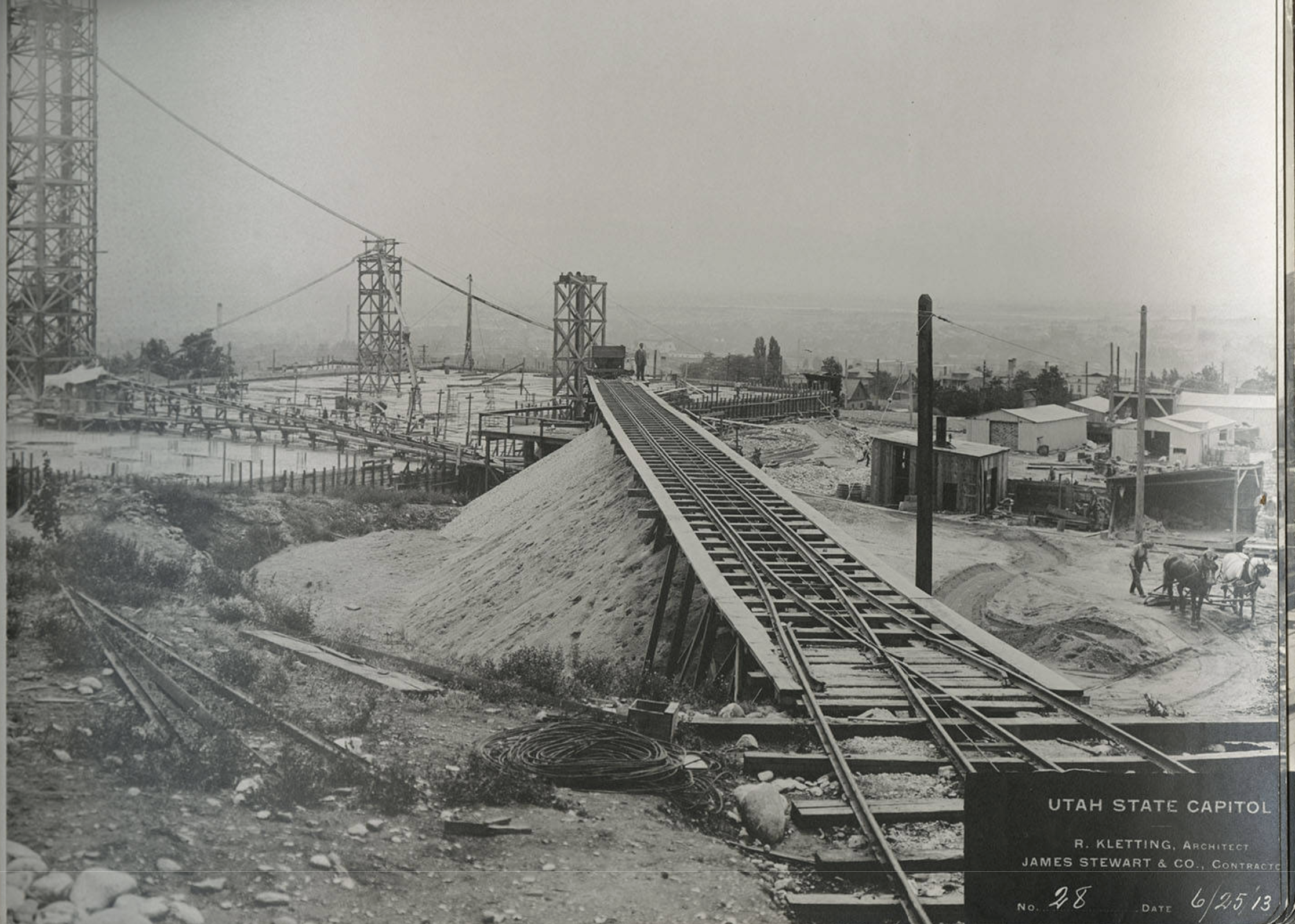State Capitol History
From Arsenal Hill to Capitol Hill
For many years, the leaders of the early Utah Territory and the young State of Utah operated out of borrowed rooms and buildings. The construction of a state capitol was a long-awaited project. Today’s Capitol Hill Complex is the result of more than a century of hard work, visionary design, and careful renovation.
In 1888, Salt Lake City donated 20 acres of land—then known as Arsenal Hill because of its previous use as a private munitions storage—to the Territory of Utah for the construction of a capitol building.
In 1909, years after Utah became the 45th state in the Union, the state legislature approved a seven-man Capitol Commission to oversee the design and construction of a state capitol. The budget was set at $2.5 million, but funding remained a problem until 1911 when the state received nearly $800,000 in inheritance taxes from the estate of Union Pacific Railroad president E. H. Harriman. The legislature responded with a $1 million bond, and the project was underway.
The Capitol Commission issued a design competition and eight architects from across Utah and the U.S. submitted their designs. Utah architect Richard K.A. Kletting won the state bidding process with his final building and landscape plans, and Capitol construction commenced in 1912. The building was completed in 1916, but financial difficulties prevented the full realization of Kletting’s original plans for the complex.
A massive renovation project from 2004 to 2008 not only restored the Capitol’s original beauty but also fulfilled many of Kletting’s early visions for the Hill. Today, the Capitol building contains two active legislative chambers, a ceremonial supreme court chamber, and the working offices of top state officials. The Capitol Hill Complex has grown to include Senate, House, and other buildings.
For more extensive information on the Capitol’s one-hundred-plus history, click here to view the panels from our Commemorating a Century 2016 Centennial exhibit.
Construction Site
Previously known as Arsenal HillConstruction Budget
$2.5 MillionArchitect
Richard K.A. KlettingConstruction Started
1912Construction Completed
1916Capitol Restoration Project
2004-2008
Building the Utah State Capitol
